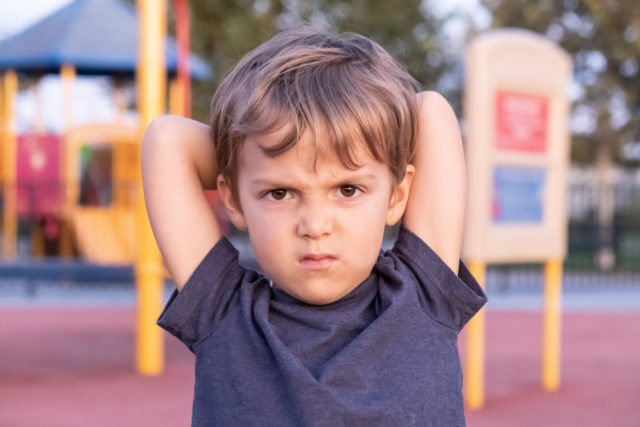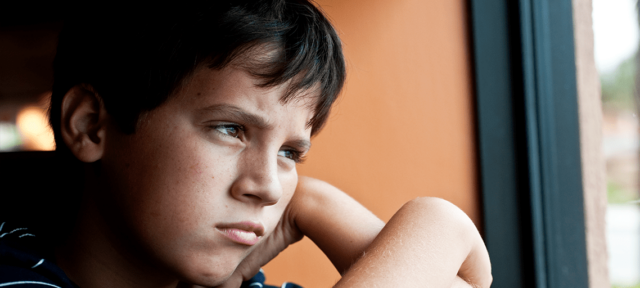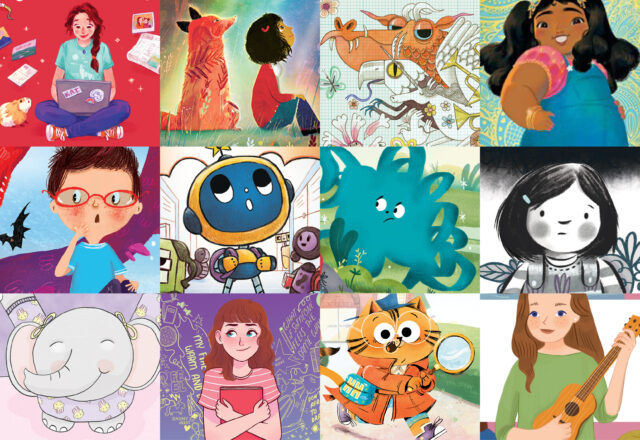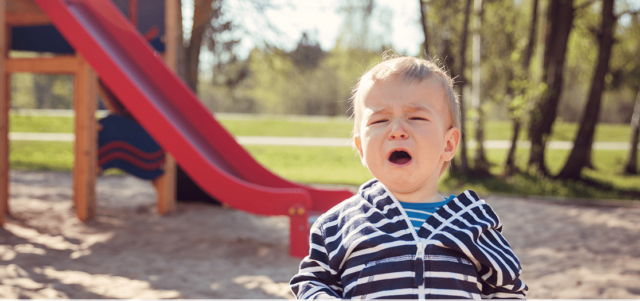One way to handle a child’s anger is to stay calm when they lose their temper. Controlling your emotions sets an example for the child. You can praise them when they express their feelings calmly and when they calm themselves down after an explosion. Adults who are confident, calm, and consistent help children develop the skills to regulate their behavior.
Angry Kids: Dealing With Explosive Behavior
How to respond when a child lashes out
Clinical Experts: Vasco Lopes, PsyD , Marc Shuldiner, PsyD
en EspañolKey Takeaways
-
Kids’ anger often stems from difficulty handling frustration; they may lack problem-solving skills and the ability to express feelings.
-
Underlying issues like ADHD, anxiety, depression, or autism may cause anger.
-
Parents can help by staying calm, teaching problem-solving skills, identifying triggers, and seeking professional help.
Quick Read
It is often difficult for parents to handle kids’ explosive and angry behavior, but understanding why they’re acting out can help. Anger issues in kids often happen because they don’t know how to deal with their frustration or other uncomfortable feelings. They haven’t yet learned skills for solving problems without getting upset.
Sometimes anger issues in kids are caused by another problem that needs treatment. This could be ADHD, anxiety, learning disabilities, sensory processing issues, or autism.
There are strategies that parents can use to help kids improve their behavior. One of the most important things is to stay calm when they get upset. This can be challenging, but it’s a great way to model good behavior. Praise them when they express their feelings calmly or calm themselves down after an explosion. Don’t give in to their demands.
Teaching kids problem-solving and communication skills can help them choose better ways to express their feelings. You can also prevent some anger in children by identifying their triggers. For example, if your child gets angry when you ask them to stop doing something they enjoy, give them gentle warnings before time is up.
If a tantrum isn’t violent, ignoring it usually works best. If your child is getting physical, then get them to a safe place. For young kids, a timeout chair or a room without toys or other rewards often works. For older kids, you might need to leave them alone so that they aren’t rewarded with your attention. In extreme situations, calling 911 can be the best way to keep yourself and your child safe.
If your child’s behavior is too much for you to handle, there are professionals who can help. Cognitive behavioral therapy (CBT) can teach kids coping skills and teach parents ways to help. If CBT isn’t enough, the child may need medication or a different treatment program.
Full Article
13 min read
When a child—even a small child—melts down and becomes aggressive, they can pose a serious risk to themselves and others, including parents and siblings.
It’s not uncommon for kids who have trouble handling their emotions to lose control and direct their distress at a caregiver—screaming and cursing, throwing dangerous objects, or hitting and biting. It can be a scary, stressful experience for you and your child, too. Children often feel sorry after they’ve worn themselves out and calmed down.
So what are you to do?
It’s helpful to first understand that behavior is communication. A child who is so overwhelmed that they are lashing out is a distressed child. They don’t have the skill to manage their feelings and express them in a more mature way. They may lack language, or impulse control, or problem-solving abilities.
Sometimes parents see this kind of explosive behavior as manipulative. But kids who lash out are usually unable to handle frustration or anger in a more effective way — say, by talking and figuring out how to achieve what they want.
Nonetheless, how you react when a child lashes out has an effect on whether they will continue to respond to distress in the same way, or learn better ways to handle feelings so they don’t become overwhelming.
Behavioral techniques for anger management
Here are some pointers to help kids learn techniques to regulate their emotions:
- Stay calm. Faced with a raging child, it’s easy to feel out of control and find yourself yelling at them. But when you shout, you have less chance of reaching them. Instead, you will only be making them more aggressive and defiant. As hard as it may be, if you can stay calm and in control of your own emotions, you can be a model for your child and teach them to do the same thing.
- Don’t give in. Don’t encourage them to continue this behavior by agreeing to what they want in order to make it stop.
- Praise appropriate behavior. When they have calmed down, praise them for pulling themselves together. And when they do try to express their feelings verbally, calmly, or try to find a compromise on an area of disagreement, praise them for those efforts.
- Help them practice problem-solving skills. When your child is not upset is the time to help them try out communicating their feelings and coming up with solutions to conflicts before they escalate into aggressive outbursts. You can ask them how they feel, and how they think you might solve a problem.
- Time-outs and reward systems. Time-outs for nonviolent misbehavior can work well with children younger than 7 or 8 years old. When using time-outs, be sure to be consistent with them and balance them with other, more positive forms of attention. If a child is too old for time-outs, you want to move to a system of positive reinforcement for appropriate behavior — points or tokens toward something they want.
- Avoid triggers. Vasco Lopes, PsyD, a clinical psychologist, says most kids who have frequent meltdowns do it at very predictable times, like homework time, bedtime, or when it’s time to stop playing, whether it’s Legos or video games. The trigger is usually being asked to do something they don’t like, or to stop doing something they do like. Time warnings (“we’re going in 10 minutes”), breaking tasks down into one-step directions (“first, put on your shoes”), and preparing your child for situations (“please ask to be excused before you leave Grandma’s table”) can all help avoid meltdowns.
What kind of tantrum is it?
How you respond to a tantrum also depends on its severity. The first rule in handling nonviolent tantrums is to ignore them as often as possible, since even negative attention, like telling the child to stop, can be encouraging.
But when a child is getting physical, ignoring is not recommended since it can result in harm to others as well as your child. In this situation, Dr. Lopes advises putting the child in a safe environment that does not give them access to you or any other potential rewards.
Critics of time-outs argue that they can be emotionally isolating for kids, but research shows that they are effective and do not cause children harm. (For more on the debate around time-outs, read our full article on the topic.) However, it’s very important to use them as just one technique in a nurturing, supportive parenting strategy. Be sure to balance use of time outs with lots of praise for kids’ positive behaviors. It’s also important to manage your own stress so that kids can learn emotional regulation from your positive example.
If the child is young (usually 7 or younger), try placing them in a time out chair. If they won’t stay in the chair, take them to a backup area where they can calm down on their own without anyone else in the room. Again, for this approach to work there shouldn’t be any toys or games in the area that might make it rewarding.
Your child should stay in that room for one minute, and must be calm before they are allowed out. Then they should come back to the chair for time out. “What this does is gives your child an immediate and consistent consequence for their aggression and it removes all access to reinforcing things in their environment,” explains Dr. Lopes.
If you have an older child who is being aggressive and you aren’t able to carry them into an isolated area to calm down, Dr. Lopes advises removing yourself from their vicinity. This ensures that they are not getting any attention or reinforcement from you and keeps you safe. In extreme instances, it may be necessary to call 911 to ensure your and your child’s safety.
Help with behavioral techniques
If your child is doing a lot of lashing out — enough that it is frequently frightening you and disrupting your family — it’s important to get some professional help. There are good behavioral therapies that can help you and your child get past the aggression, relieve your stress, and improve your relationship. You can learn techniques for managing their behavior more effectively, and they can learn to rein in disruptive behavior and enjoy a much more positive relationship with you.
- Parent-child interaction therapy. PCIT has been shown to be very helpful for children between the ages of 2 and 7. The parent and child work together through a set of exercises while a therapist coaches parents through an ear bud. You learn how to pay more attention to your child’s positive behavior, ignore minor misbehaviors, and provide consistent consequences for negative and aggressive behavior, all while remaining calm.
- Parent Management Training. PMT teaches similar techniques as PCIT, though the therapist usually works with parents, not the child.
- Collaborative and Proactive Solutions. CPS is a program based on the idea that explosive or disruptive behavior is the result of lagging skills rather than, say, an attempt to get attention or test limits. The idea is to teach children the skills they lack to respond to a situation in a more effective way than throwing a tantrum.
Figuring out explosive behavior
Tantrums and meltdowns are especially concerning when they occur more often, more intensely, or past the age in which they’re developmentally expected — those terrible twos up through preschool. As a child gets older, aggression becomes more and more dangerous to you, and the child. And it can become a big problem for them at school and with friends, too.
If your child has a pattern of lashing out it may be because of an underlying problem that needs treatment. Some possible reasons for aggressive behavior include:
- ADHD: Kids with ADHD are frustrated easily, especially in certain situations, such as when they’re supposed to do homework or go to bed.
- Anxiety: An anxious child may keep their worries secret, then lash out when the demands at school or at home put pressure on them that they can’t handle. Often, a child who “keeps it together” at school loses it with one or both parents.
- Undiagnosed learning disability: When your child acts out repeatedly in school or during homework time, it could be because the work is very hard for them.
- Sensory processing issues: Some children have trouble processing the information they are taking in through their senses. Things like too much noise, crowds and even “scratchy” clothes can make them anxious, uncomfortable, or overwhelmed. That can lead to actions that leave you mystified, including aggression.
- Autism: Children on all points of the spectrum are often prone to major meltdowns when they are frustrated or faced with unexpected change. They also often have sensory issues that make them anxious and agitated.
Given that there are so many possible causes for emotional outbursts and aggression, an accurate diagnosis is key to getting the help you need. You may want to start with your pediatrician. They can rule out medical causes and then refer you to a specialist. A trained, experienced child psychologist or psychiatrist can help determine what, if any, underlying issues are present.
When behavioral plans aren’t enough
Professionals agree, the younger you can treat a child, the better. But what about older children and even younger kids who are so dangerous to themselves and others, behavioral techniques aren’t enough to keep them, and others around them, safe?
- Medication. Medication for underlying conditions such as ADHD and anxiety may make your child more reachable and teachable. Kids with extreme behavior problems are often treated with antipsychotic medications like Risperdal or Abilify. But these medications should be partnered with behavioral techniques.
- Holds. Parent training may, in fact, include learning how to use safe holds on your child, so that you can keep both them and yourself out of harm’s way.
- Residential settings. Children with extreme behaviors may need to spend time in a residential treatment facility, sometimes, but not always, in a hospital setting. There, they receive behavioral and, most likely, pharmaceutical treatment. Therapeutic boarding schools provide consistency and structure round the clock, seven days a week. The goal is for the child to internalize self-control so they can come back home with more appropriate behavior with you and the world at large.
- Day treatment. With day treatment, a child with extreme behavioral problems lives at home but attends a school with a strict behavioral plan. Such schools should have trained staff prepared to safely handle crisis situations.
Explosive children need calm, confident parents
It can be challenging work for parents to learn how to handle an aggressive child with behavioral approaches, but for many kids it can make a big difference. Parents who are confident, calm, and consistent can be very successful in helping children develop the anger management skills they need to regulate their own behavior.
This may require more patience and willingness to try different techniques than you might with a typically developing child, but when the result is a better relationship and happier home, it’s well worth the effort.
Frequently Asked Questions
This article was last reviewed or updated on June 20, 2025.
Topics
Was this article helpful?
Related Reading
-
 Disruptive Behavior: Why It’s Often Misdiagnosed
Tantrums and defiance may mask issues that aren't apparent to teachers and parents
Disruptive Behavior: Why It’s Often Misdiagnosed
Tantrums and defiance may mask issues that aren't apparent to teachers and parents
-
 Is My Child’s Anger Normal?
How to tell if emotional outbursts or aggression are beyond typical childhood behavior.
Is My Child’s Anger Normal?
How to tell if emotional outbursts or aggression are beyond typical childhood behavior.
-
 DMDD: Extreme Tantrums and Irritability
Kids with this disorder act out because they can't manage big emotions
DMDD: Extreme Tantrums and Irritability
Kids with this disorder act out because they can't manage big emotions
-
 Complete Guide to Managing Behavior Problems
When children struggle with their behavior, it can have a negative impact on everyone in the family. Parents know they need to respond, but they…
Complete Guide to Managing Behavior Problems
When children struggle with their behavior, it can have a negative impact on everyone in the family. Parents know they need to respond, but they…
-
 A New Diagnosis for Explosive Behavior
The pros and cons of disruptive mood dysregulation disorder
A New Diagnosis for Explosive Behavior
The pros and cons of disruptive mood dysregulation disorder
-
 Breaking the Behavior Code
How teachers can read and respond more effectively to disruptive students
Breaking the Behavior Code
How teachers can read and respond more effectively to disruptive students
-
 ADHD and Behavior Problems
Why are tantrums, outbursts and defiance so common in kids with the disorder? And how can we help them behave better?
ADHD and Behavior Problems
Why are tantrums, outbursts and defiance so common in kids with the disorder? And how can we help them behave better?
More Related




